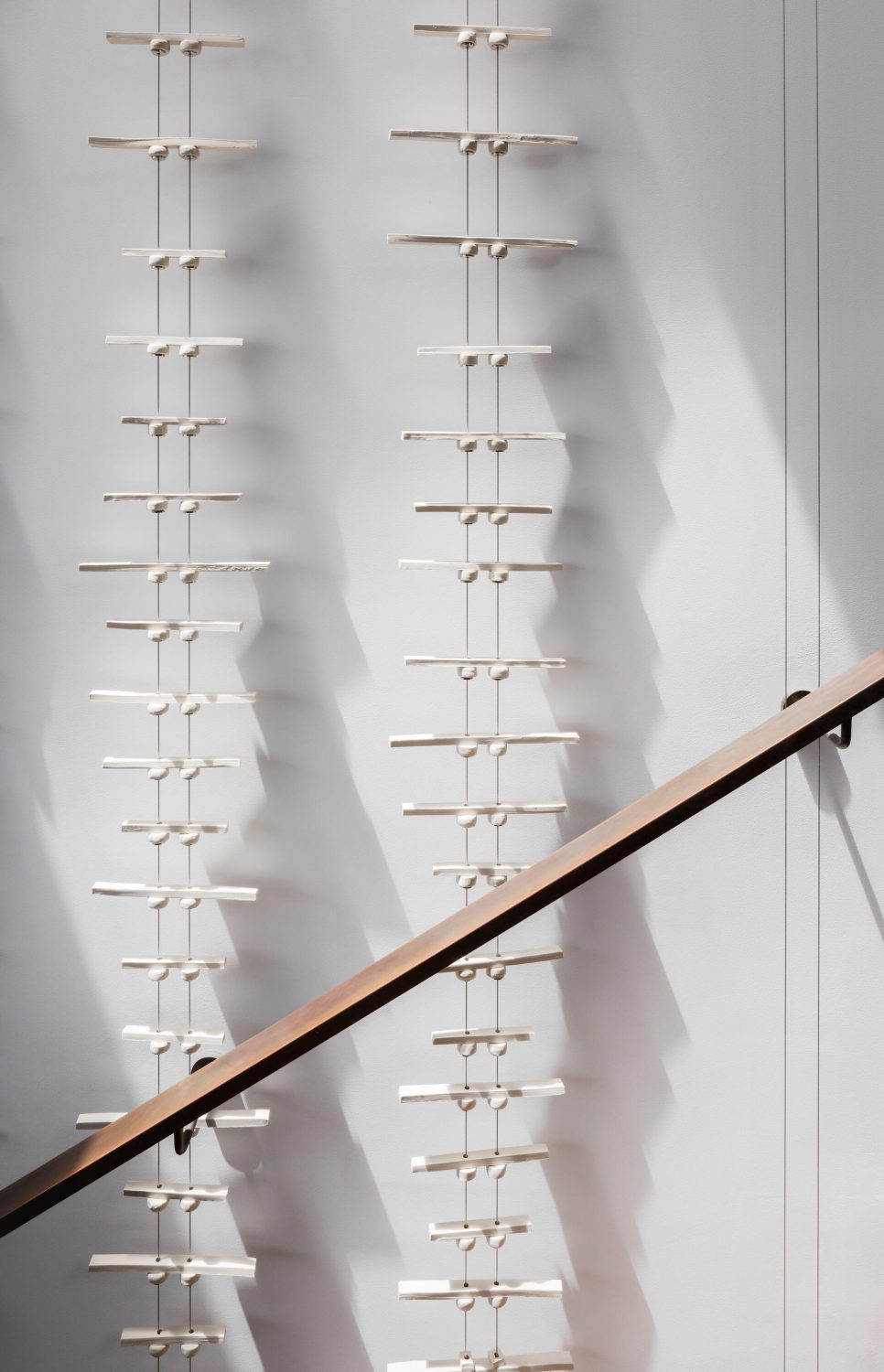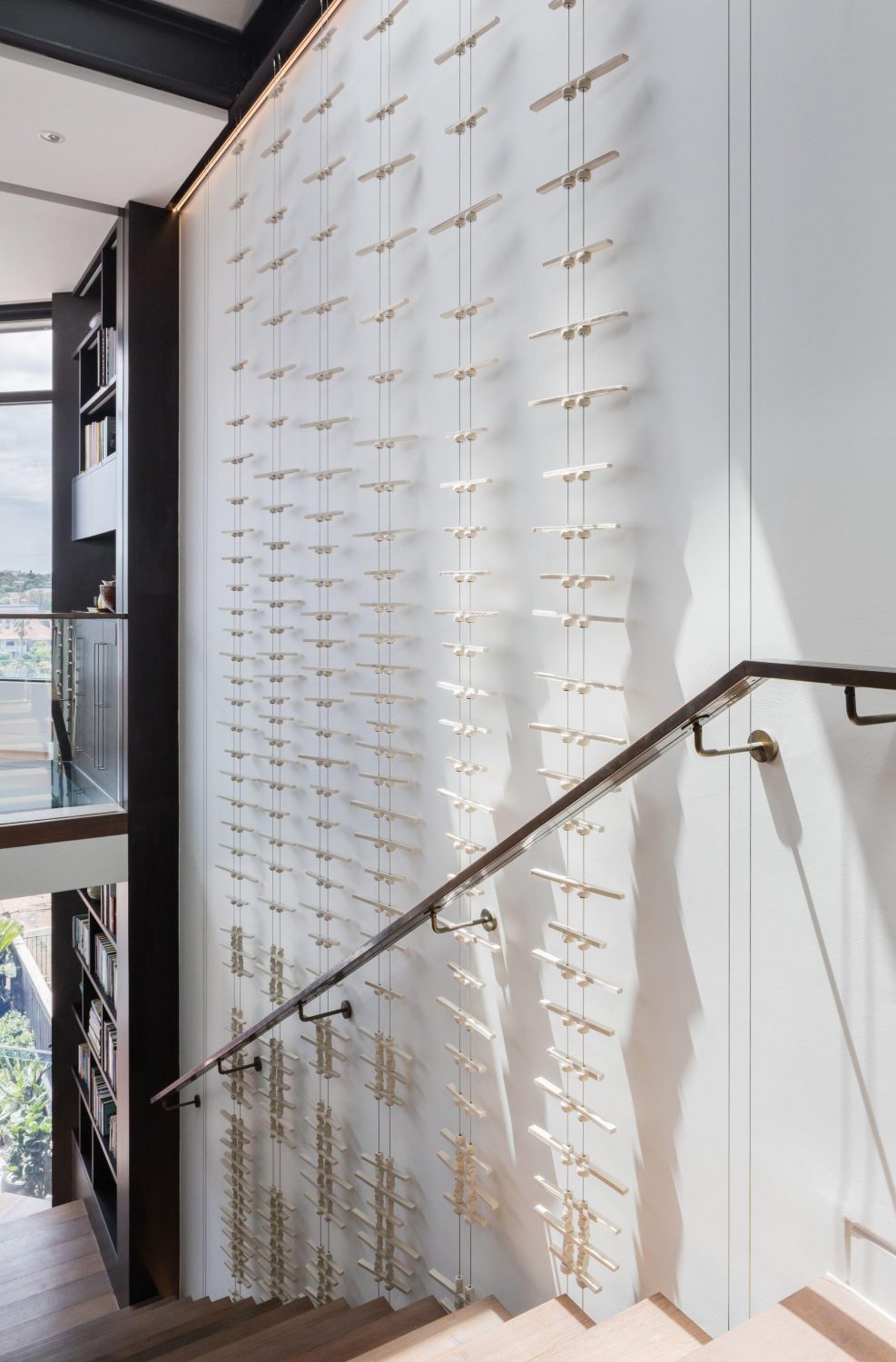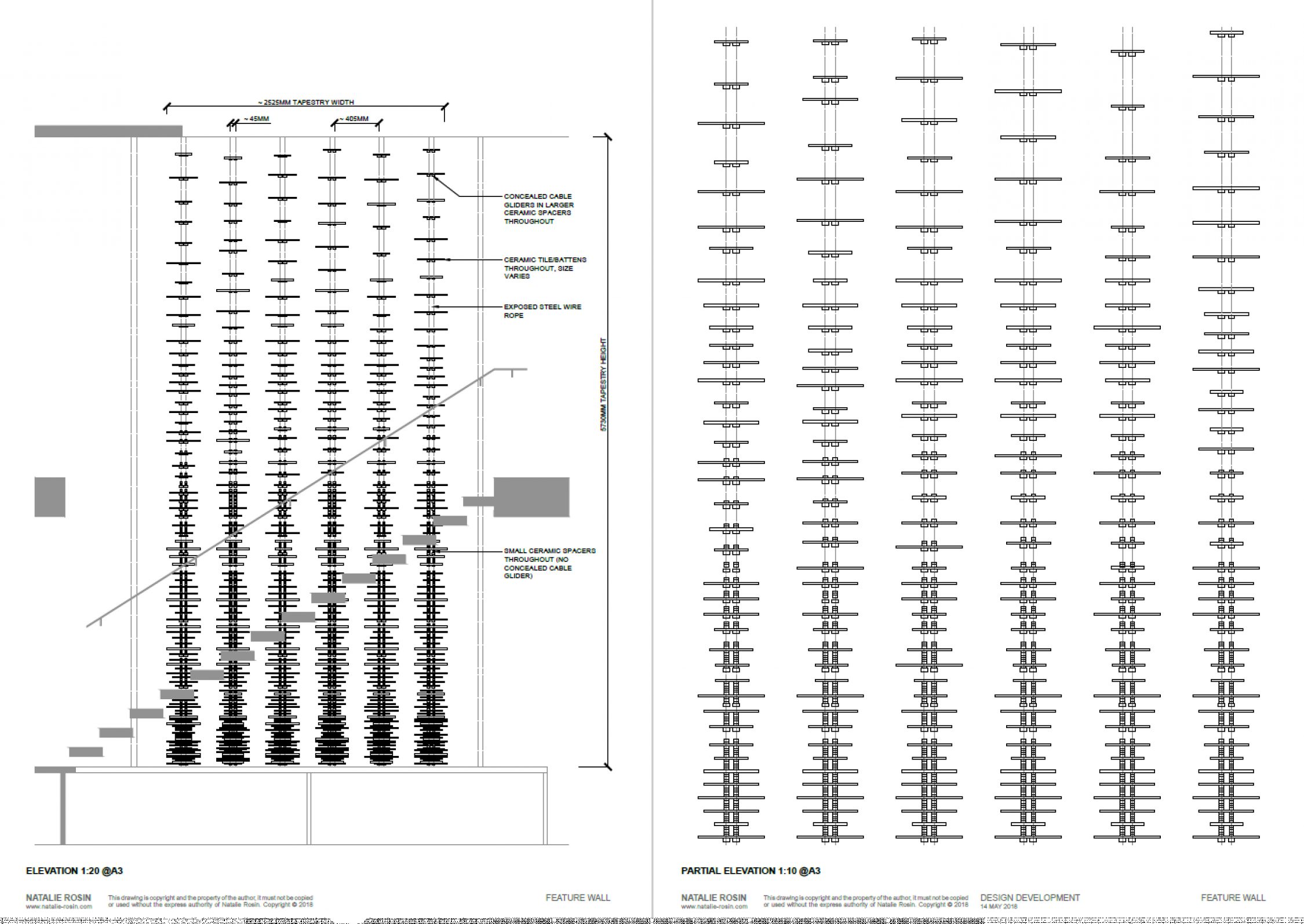Kirribilli Tapestry - Bijl x Natalie Rosin

With an admirable dedication to form, light and ceramic expression, Natalie Rosin enlivens the shadow play of our Doorzien House.
- Project.
- Kirribilli Tapestry - Bijl x Natalie Rosin
- Category.
- BIJL x
- Client.
- Private
- Location.
- Kirribilli, NSW
- Completed.
- 2019
- Photography.
- Katherine Lu, Natalie Rosin

During the early stages of construction of the Doorzien House, Bijl Architecture approached Natalie Rosin to provide concepts for a ‘ceramic tapestry’ to be hung in the double-height stair wall space. Rosin, whose architectural studies inform her ceramic artistry and practice, is particularly interested in pursuing ceramic interpretations of buildings, typologies and building elements.


This unique site-specific installation - which involved the collaborative efforts of artist, architect, builder, and structural engineer alike - casts dynamic shadows throughout the seasons. Combining 2,580 individual ceramic pieces, the tapestry hangs the cantilevered staircase, affixed to the expressed steelwork that frames the spaces of the renewed heritage dwelling.


The challenging design process for deciding on the ‘warp’ of the tapestry - the ceramic being the ‘weft’ - resulted in the adoption of the Fix-8 artwork hanging system. Reviewing the potential appearance of the ceramic pieces alongside Rosin and our clients was a somewhat simpler task. We examined and developed the overall tapestry form, the potential shapes, samples and glazes for the ceramic pieces and how these worked both individually and in a holistic composition. Drawings, prototypes and sketch iterations were produced to test the tapestry feasibility and the density of ceramic pieces that could be suspended from the Fix-8 system.


After pursuing various designs - including a hiatus until the main house project was completed - a simple flat bar and round stopper system was adopted, a fitting design for the industrial-inflected architectural language of the dwelling. This system further innovates the artwork, by allowing the tapestry to be manually altered - the intensity of shadow and density of the ceramics can be changed to suit the mood and whim of the owners.
